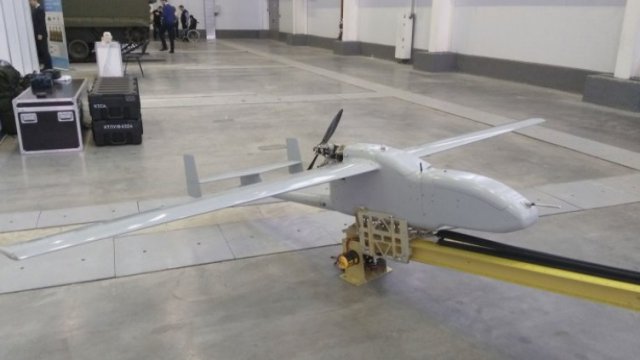Russia has designed new payloads for its Granat-4 unmanned aerial vehicle (UAV) to allow it to act as a signals intelligence (SIGINT) platform.
Currently the tactical UAV is used for photo reconnaissance and artillery spotting/targeting. The new payloads allow the Granat-4 to conduct SIGINT roles such as radio monitoring, signals collection, and signal direction, as well as the ability to act as a radio relay for friendly forces.
A Granat-4 unmanned air system (UAS) comprises two UAVs, a set of replaceable payload modules, a starter, a charging and refuelling station for the UAVs, a ground control post on the basis of the KAMAZ-4350 truck with the 4350D-11 van-type body, two transportation containers, and a demountable catapult.
The Granat-4 UAV has a maximum take-off weight of 30 kg, a maximum payload weight of 3 kg, a length of 2.4 m, a wing span of 3.2 m, a cruising speed of 90 km/h, a maximum speed of 145 km/h, an operational range of up to 70 km, and a maximum flight altitude of 11,500 ft.
Izhmash Unmanned Systems is the designer and manufacturer of the Granat UAV family and has been developing and supplying UAVs to the Russian Armed Forces since 2007. Alongside the Granat family, the Russian Army also operates the Izhmash Mukha micro-UAV and Takhion UAV families.
Izhmash is keen to export its UAV technologies, with Yevgeny Zaitsev, the company’s development deputy director, saying at a recent Russian robotics conference that, “CSTO [Collective Security Treaty Organization] member states are taking interest in our Granat-1E, Takhion-E, and Granat-4E unmanned aerial vehicles.
“Other countries are also interested [in our UAVs]. We have been approached by representatives of Asian and African countries. Talks with certain foreign customers are at a pre-contract stage,” Zaitsev said.
Photo: Nikolai Novichkov
Source: IHS Jane’s 360

